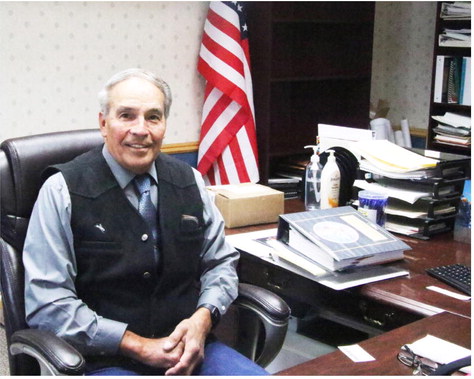More Compost Might Not Be What Garden Soil Needs
With spring arriving, gardeners are preparing soils for this year’s planting, and many love to apply compost, which can supply nutrients, feed microbial activity, help retain soil moisture and improve soil structure.
However, there can be too much of a good thing, according to Clain Jones, Montana State University Extension soil fertility specialist and professor in the MSU Department of Land Resources and Environmental Sciences.
“I have been receiving many soil tests from vegetable gardens with excessively high levels of nitrogen, phosphorus and potassium,” Jones said. “The owners are asking what can be done to remedy the soil.”
Jones said there are several concerns with very high levels of nitrogen, phosphorus and potassium in soil. High nitrogen can result in too much leaf growth and less flower production in some vegetables, like tomatoes.
Water can also carry nitrogen through the soil below crop roots, where it can no longer be taken up by the plants. Ultimately, nitrogen will move into groundwater and contaminate drinking water. Jones noted that high nitrates can be harmful, especially to infants and pregnant women. Surface water can also be contaminated with high levels of nitrogen.
Excess phosphorus can contaminate surface water through runoff and cause poor crop production and quality, Jones said. For example, high phosphorus interferes with zinc uptake, while high potassium can interfere with calcium uptake. Tomato blossom end rot might be due to too much potassium rather than not enough calcium.
Jones added that an overload of phosphorus, potassium and sometimes nitrogen generally comes from the application of too much manure, or manure- or food waste-based compost. One inch of manure compost supplies enough nitrogen for one growing season, but also adds four years’ worth of potassium and 14 years’ worth of phosphorus. Annual application of manure or foodwaste compost can quickly lead to excess levels of potassium and phosphorus.
Jones noted there aren’t many options for correcting soils with high levels of phosphorus and potassium; the key is prevention, or at least, to not add more. Leaf compost or a 50-50 blend of food/ yard compost have a balance of nitrogen, phosphorus and potassium that is closer to that required by vegetables than manure or straight food compost, he said. Leaving healthy plant residue on the soil at the end of the season is another option to provide nutrients and to protect soil over winter.
“Material high in carbon, such as yard compost or waste hay, can be used to improve soil health, along with an amendment high in nitrogen if needed. Sustainable sources of nitrogen are feather meal and blood meal. These sources contain nitrogen in a form readily available to plants,” said Jones. Many other materials, such as alfalfa or bone meal, contain medium levels of nitrogen, but only a third or less of that nitrogen is available for plant uptake in the first year.
Another option is to plant a portion of the garden each year with a legume cover crop, such as field pea, to supply nitrogen and foster healthy soil. This is especially attractive for growers who have more garden space than they can manage.
“Knowing the soil’s nutrient levels can help to select the correct amendments to promote healthy plants and soils, minimize risks of water contamination and likely save money,” Jones said. He or a local MSU Extension agent can answer questions on soil testing, and agents can often loan soil probes for at-home testing.
Many seed catalogs and garden stores offer home or do-it-yourself soil test kits, and spring is a good time to sample garden soil. Unfortunately, few home test kits provide accurate enough information to make fertilizer decisions.
“It is worth getting soil tested through an accredited lab every few years to ensure that soil nutrients are at healthy levels,” Jones said.
More information on soil nutrients, home garden amendments and soil testing is available at the MSU Extension soil fertility website at http://landresources. montana.edu/soilfertility/ home-gardening.html and from the MSU Master Gardener program at https://mtmastergardener. org/.
 ...
...
